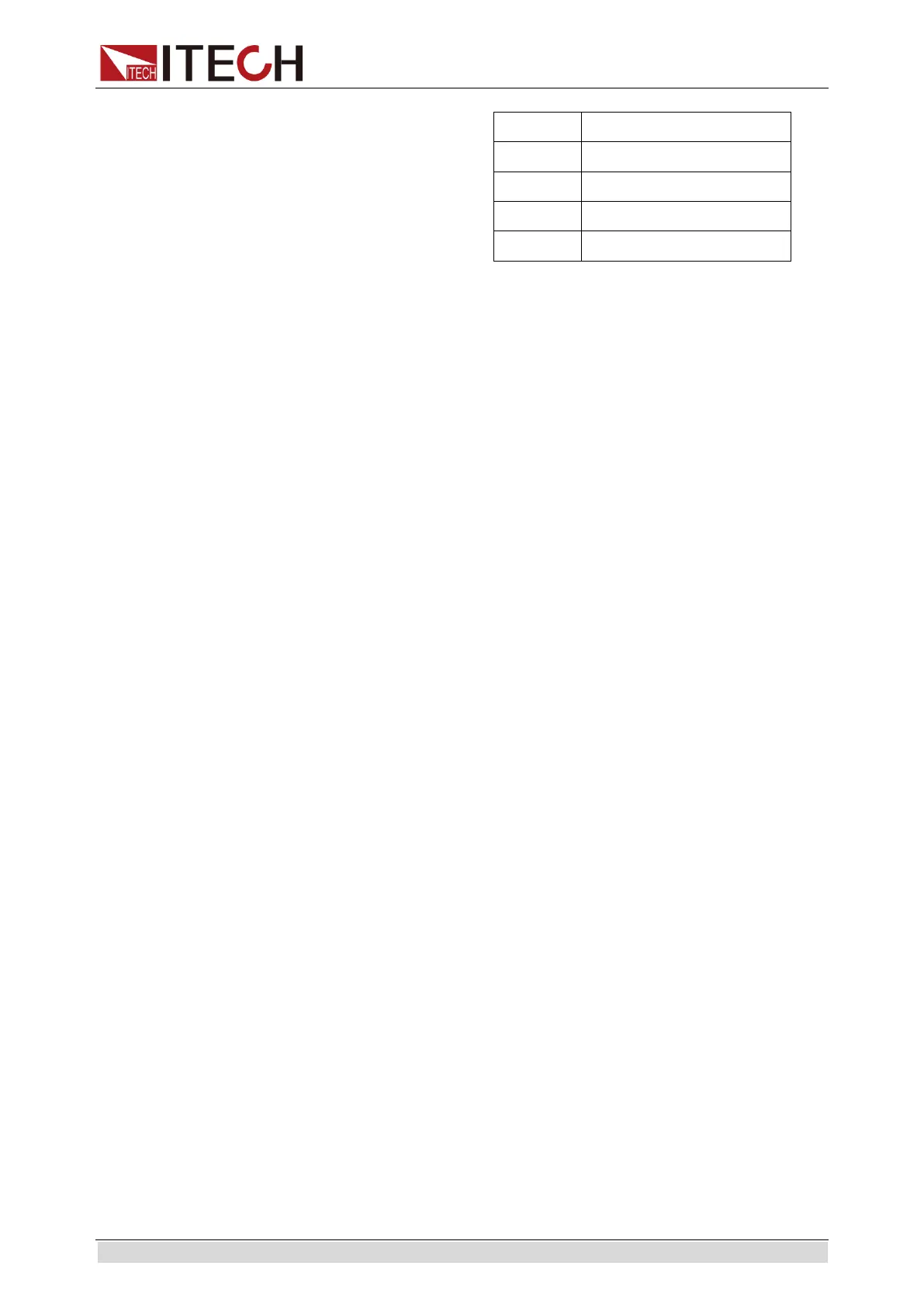

Do you have a question about the ITech IT8811 and is the answer not in the manual?
| Brand | ITech |
|---|---|
| Model | IT8811 |
| Category | Test Equipment |
| Language | English |
Verifies all items received in the product package.
Procedures for connecting the device under test (DUT).
Guidance on connecting the power source and selecting appropriate cables.
Overview of the four constant operation modes (CC, CV, CR, CW).
Details on setting and operating the Constant Current mode.
Details on setting and operating the Constant Voltage mode.
Details on setting and operating the Constant Resistance mode.
Details on setting and operating the Constant Power mode.
Performs tests by switching between two dynamic parameters.
Performs Overcurrent Protection (OCP) tests.
Performs Overpower Protection (OPP) tests.
Tests battery performance by controlled discharge.
Overview of OVP, OCP, OPP, and OTP protection mechanisms.
Configures and runs automated test sequences.
Detailed electrical and performance specifications for models.